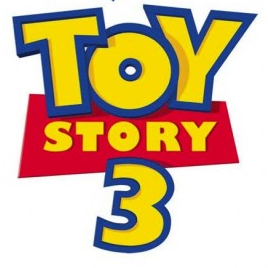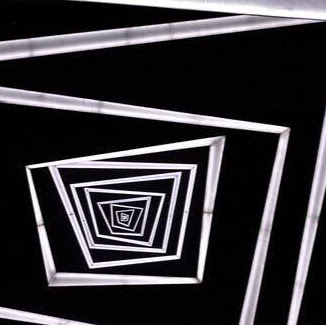Ting Zhang
age ~44
from West Covina, CA
Ting Zhang Phones & Addresses
- West Covina, CA
- La Puente, CA
- Santa Monica, CA
- Fresno, CA
- Indio, CA
- La Puente, CA
Lawyers & Attorneys
Name / Title
Company / Classification
Phones & Addresses
LONDON INSTITUTE OF TRADITIONAL CHINESE MEDICINE
Chinese Food Products
Chinese Food Products
433 Ambleside Dr., London, ON N6G 4X9
(519)8500793
(519)8500793
President
Infinity University Inc
960 N Broadway, Los Angeles, CA 90012
Parkside Garden LLC
Nursing Home Management Service
Nursing Home Management Service
111 N Atlantic Blvd, Monterey Park, CA 91754
2789 Rafferty Rd, Hemet, CA 92545
(951)9298880
2789 Rafferty Rd, Hemet, CA 92545
(951)9298880
LONDON INSTITUTE OF TRADITIONAL CHINESE MEDICINE
Chinese Food Products
Chinese Food Products
(519)8500793
Minsheng, LLC
Real Estate Investment · Real Estate Investment Service · Business Services at Non-Commercial Site
Real Estate Investment · Real Estate Investment Service · Business Services at Non-Commercial Site
1010 Heaton Moor Dr, Walnut, CA 91789
1010 Heatim Moor, Walnut, CA 91789
1010 Heatim Moor, Walnut, CA 91789
Triunfo One Acquisition, LLC
Real Estate · Real Estate Investment
Real Estate · Real Estate Investment
1500 Rosecrans Ave, Manhattan Beach, CA 90266
2321 Rosecrans Ave, El Segundo, CA 90245
2029 Century Park E, Los Angeles, CA 90067
2321 Rosecrans Ave, El Segundo, CA 90245
2029 Century Park E, Los Angeles, CA 90067
President
INFINITY TCCA MEDICAL UNIVERSITY USA
23885 Enriquez Dr, Diamond Bar, CA 91765
President
HUMANITY CULTURAL EDUCATION FOUNDATION
Civic/Social Association
Civic/Social Association
23885 Enriquez Dr, Diamond Bar, CA 91765
Us Patents
-
Machine Learning Based Recommendation Of Vehicle
view source -
US Patent:20210224666, Jul 22, 2021
-
Filed:Jan 22, 2020
-
Appl. No.:16/749069
-
Inventors:- Tokyo, JP
TING ZHANG - Torrance CA, US -
International Classification:G06N 5/04
G06N 20/00
G07C 5/08
G06Q 30/06 -
Abstract:A vehicle recommendation device and a method for machine learning based recommendation of vehicle is provided. The vehicle recommendation device receives vehicle log data from a plurality of sensors associated with each of a first set of vehicles. The first set of vehicles are classified based on a set of vehicle types. The vehicle recommendation device generates vehicle trip data, associated with a plurality of trips of each of the first set of vehicles, based on the received vehicle log data. The vehicle recommendation device further determines a set of features, associated with the plurality of trips or with information about the first set of vehicles, based on the generated vehicle trip data. The vehicle recommendation device further generates a machine learning model which is trained based on the determined set of features to output a first type of vehicle from the set of vehicle types.
-
System And Method Of Altering The Appearance Of Liquid And Solid Physical Objects Or Forms
view source -
US Patent:20200413013, Dec 31, 2020
-
Filed:Feb 28, 2020
-
Appl. No.:16/805666
-
Inventors:Mark Fuller - Sun Valley CA, US
James Doyle - Sun Valley CA, US
Gautam Rangan - Sun Valley CA, US
Scott Winslow - Sun Valley CA, US
Isaiah Gernhardt - Sun Valley CA, US
Ting Zhang - Sun Valley CA, US -
International Classification:H04N 9/31
H04N 5/262
H04N 5/247 -
Abstract:A system and method for altering the visual appearance of moving physical forms is disclosed. The moving physical forms may include solids, liquids, gasses and any combination thereof. The system and method may include video capturing devices for capturing video footage of the moving forms, a controller for altering the captured video footage of the moving forms, and video projecting devices for projecting the altered video footage back onto the moving forms.
-
Ride-Hailing Vehicle Identification
view source -
US Patent:20200294327, Sep 17, 2020
-
Filed:Mar 14, 2019
-
Appl. No.:16/353543
-
Inventors:- Tokyo, JP
Ting Zhang - Torrance CA, US -
International Classification:G07C 5/02
G01C 21/34
G01C 21/36
G08G 1/01 -
Abstract:The present disclosure generally relates to methods and systems for determining usage of a vehicle. A vehicle monitoring system may include, a memory, at least one processor coupled to the memory, and a sensory system that generates vehicle trip data during a monitoring window. The vehicle monitoring system may partition the trip data into a base group and a contrast group. The vehicle monitoring system may calculate a similarity score between the contrast group and the base group. The vehicle monitoring system may determine that the vehicle has been used for commercial purposes in response to the similarity score satisfying a threshold.
-
Ride-Hailing Vehicle Identification
view source -
US Patent:20200294328, Sep 17, 2020
-
Filed:Mar 14, 2019
-
Appl. No.:16/353616
-
Inventors:- Tokyo, JP
Ting ZHANG - Torrance CA, US -
International Classification:G07C 5/02
G01C 21/28 -
Abstract:The present disclosure generally relates to methods and systems for determining usage of a vehicle. A vehicle monitoring system may include a memory, at least one processor coupled to the memory, and a sensor system that generates vehicle trip data. The system may periodically determine a location of the vehicle during a trip while an ignition of the vehicle remains on. The system may determine that a duration of the trip is at least a threshold duration. The system may determine a direction of travel for segments between consecutive locations during the trip. The system may determine a ratio of a most common direction of travel for the trip to at least a second most common direction of travel for the trip. The system may determine that the vehicle has been used for commercial purposes in response to the ratio being less than a threshold ratio.
Resumes

Ting Zhang
view source
Ting Zhang
view source
Ting Zhang
view source
Ting Zhang
view source
Ting Zhang
view source
Ting Zhang
view sourceLocation:
United States

Ting Zhang
view sourceLocation:
United States
Youtube
Myspace
Plaxo

Ting Zhang
view sourceCambridge
Flickr

Ting Ting Zhang
view source
Ting Rong Zhang
view source
Ting Zhang
view source
Ting Zhang
view source
Ting Ting Zhang
view source
Ting Ting Zhang
view source
Ting Ting Zhang
view source
Ting Ting Zhang
view sourceGoogleplus

Ting Zhang
Work:
Palm, Inc. - Applications Developer
Education:
University of Waterloo - Systems Design Engineering

Ting Zhang
Work:
CCID - Consultant (2009)
Education:
Tsinghua University - Industrial Engineering

Ting Zhang
Work:
Google
Education:
University of Tokyo

Ting Zhang
Education:
Saint Louis University School of Medicine

Ting Zhang
Education:
University of Kentucky

Ting Zhang
Work:
Tencent Holdings - Prodect manager

Ting Zhang
Work:
Sisu - Lecturer

Ting Zhang
About:
Ting Zhang is a Research Assistant Professor of The Jacob France Institute in the Merrick School of Business. Her research has been focused on labor, entrepreneurship, regional economy, and aging. M...
Classmates

Ting Zhang
view sourceSchools:
Jose Celso Babosa Public School 206 New York NY 1997-2001
Community:
Robert Pagen, Maria Cruz, Arleen Shapiro

Liberty High School, New ...
view sourceGraduates:
Agustin Reynoso (1988-1992),
Hui Ting Zhang (1993-1997),
Juan Bruno (1983-1987),
Leandro Castro (1993-1997),
Jennifer Solano (1999-2003)
Hui Ting Zhang (1993-1997),
Juan Bruno (1983-1987),
Leandro Castro (1993-1997),
Jennifer Solano (1999-2003)
Get Report for Ting Zhang from West Covina, CA, age ~44














